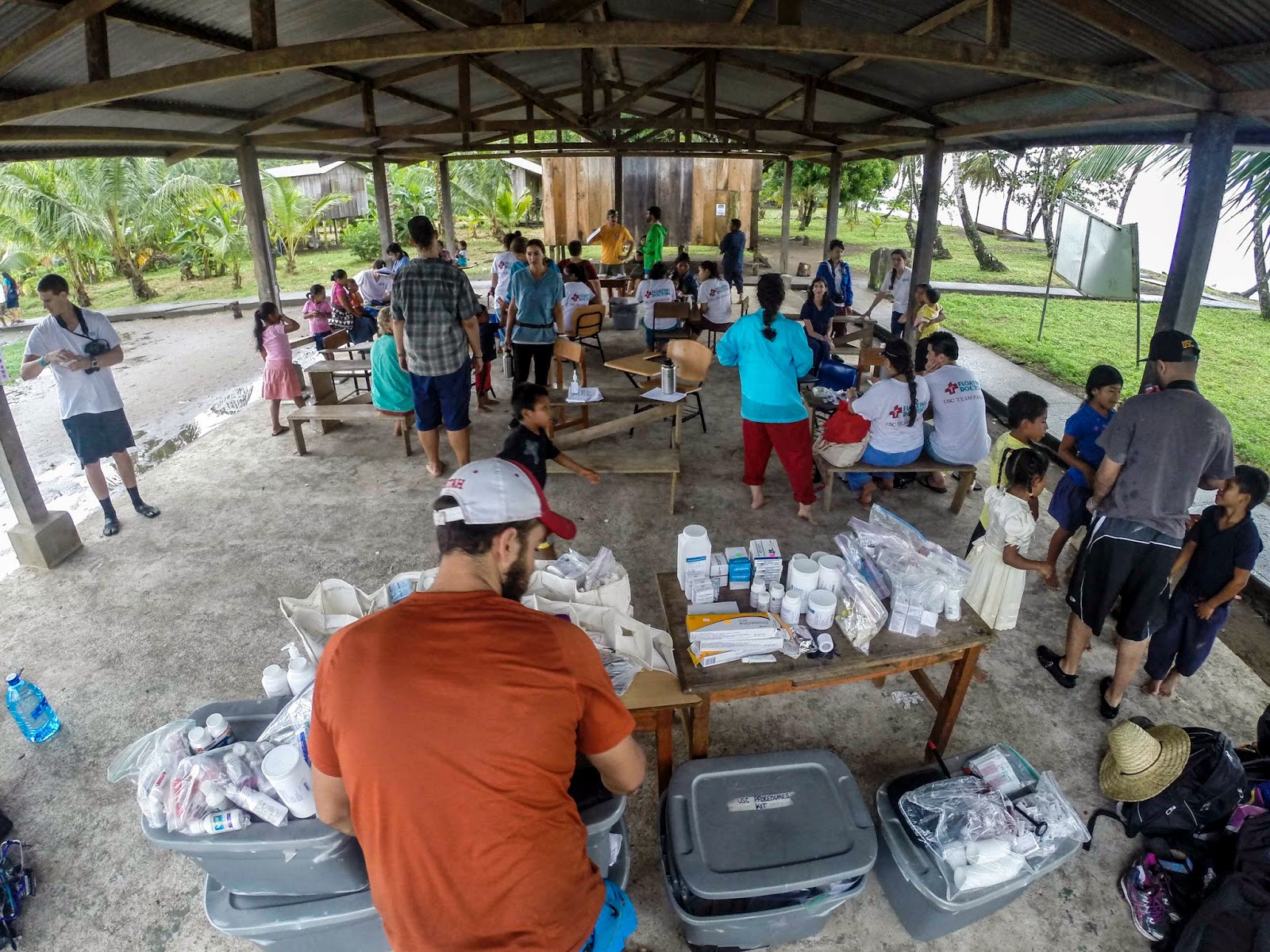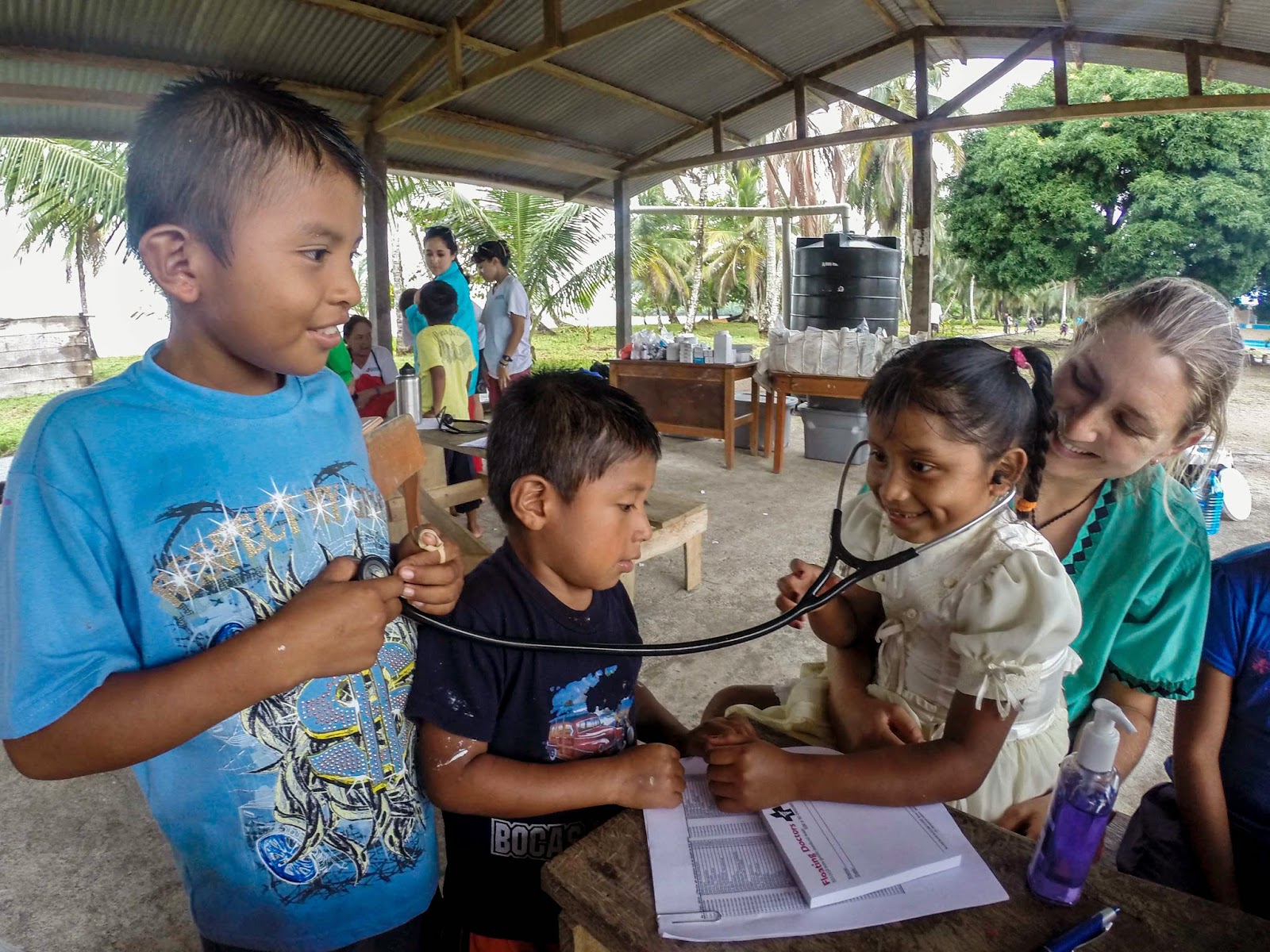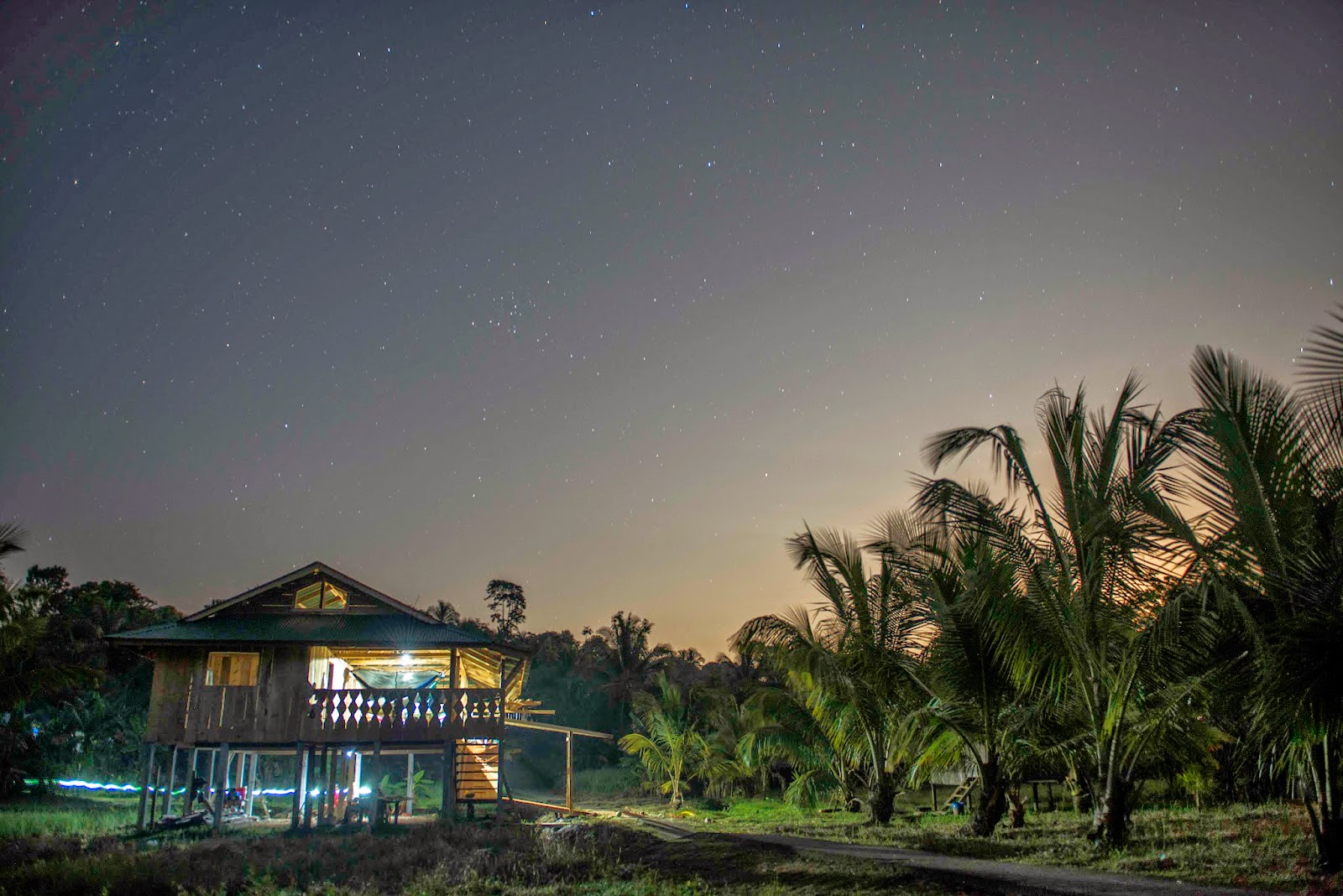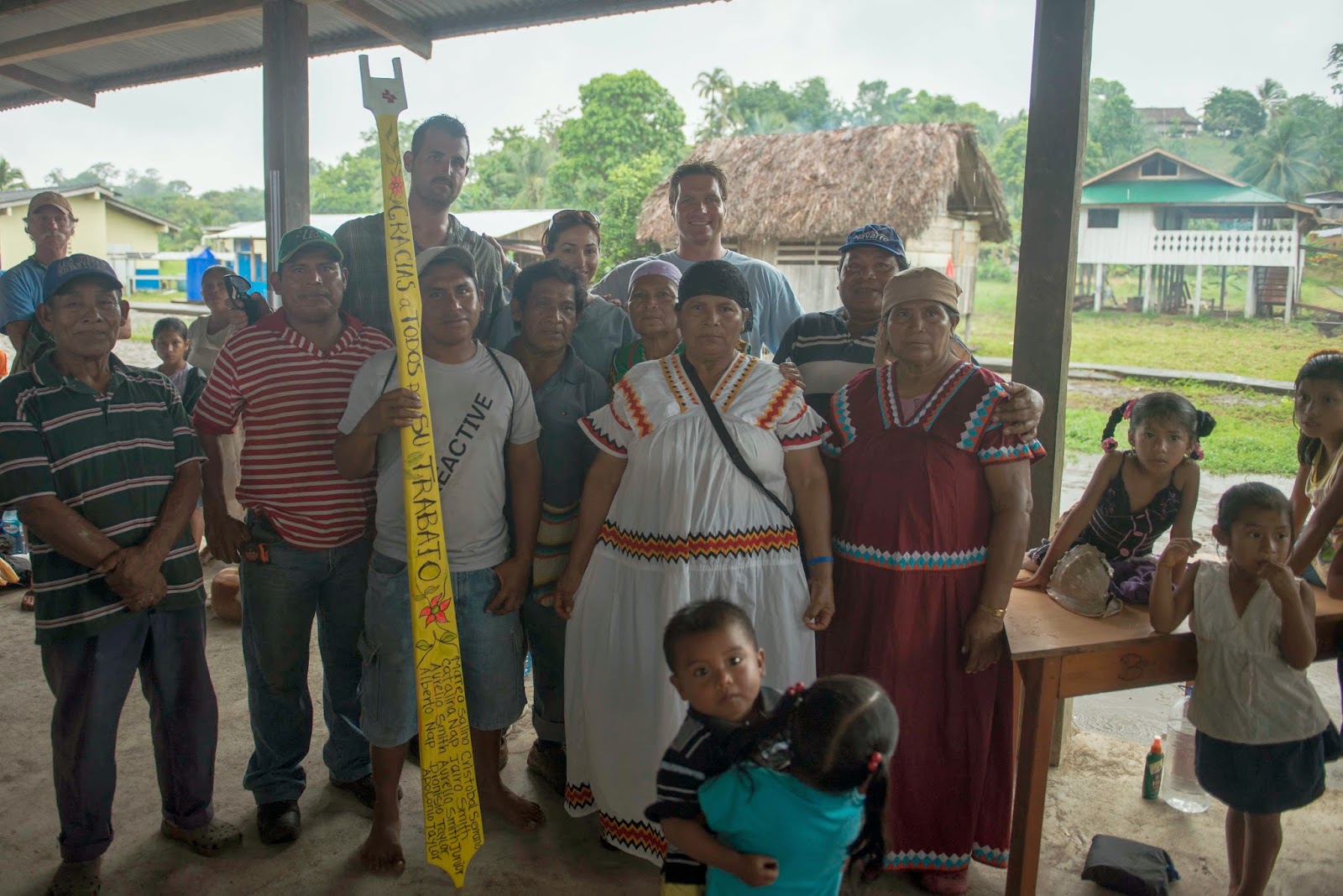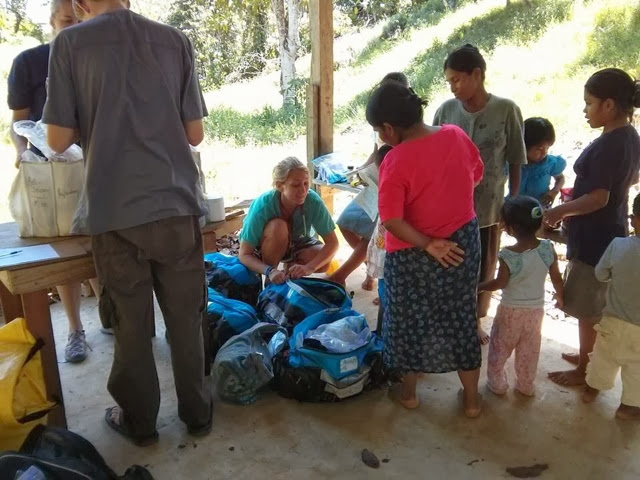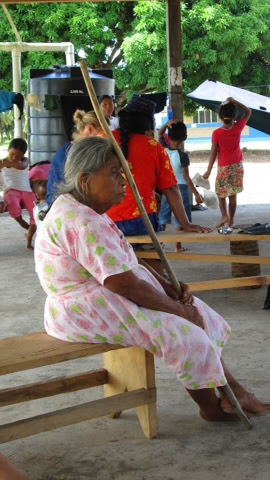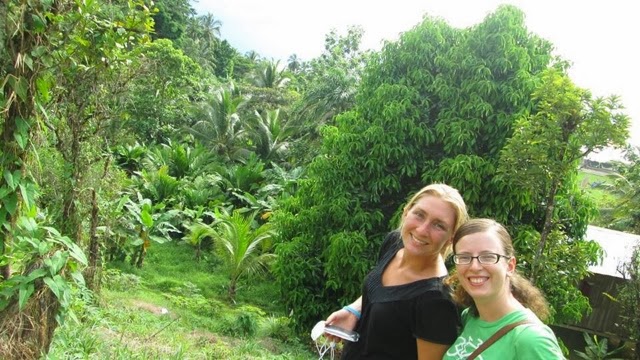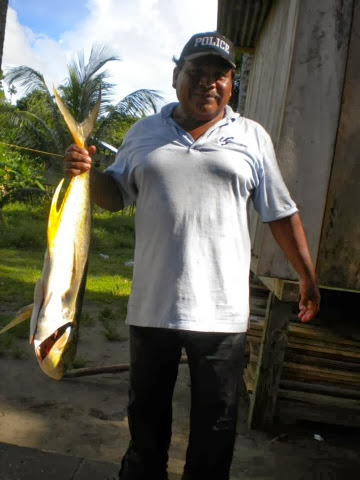...Ngobere for 'see you again soon!' were the final words I called out to my smiling friends as I raised my hand, waved and ducked into a local minibus to start my long journey back to the UK from the jungles of northern Panama.
It's been a long journey home; Miami airport is not a kind place, and my body threw me a hefty dose of tonsillitis just to make the travelling that much more pleasant. But I made it in one piece and into the giggling, smiling arms of my 2 year old niece at London's Heathrow. After a warm reception and the usual faff of car park tickets, figuring out where to deposit your now-empty luggage trolley and navigating the airport exit signs, we made it back to the tranquil countryside village of my family home. Only then did it began to sink in that I really had left Panama. Well, it's now fully sunk in and It's blowing a hoolie outside my Oxfordshire window (and for those of you with no Scottish blood that means there's a huge great gale trying to force it's way into the house); so as I pull on my thermals, wiggle into my fleecy slippers and cup my hands around a warm hot chocolate it is time to look back, reflect upon the last twelve weeks and share with you some of the finer details that have escaped me whilst writing excitedly from my Panamanian jungle hideaways.
The first thing that is dying to spring from my fingertips is a description of our most recent multi-day clinic to La Sabana, but that deserves a whole blog to itself, so I shall refrain and instead embark upon a virtual 'day in the life of a Floating Doctor volunteer' (not least because I have been gently nudged into doing so by a very wise lady who brought to my attention that she really had absolutely no idea of how life unfolded when we were not out on multi-day clinics!). So this one is for you Chris.
Well, Xylophone girl really deserves a mention here. She is the first thing any of us hear in the morning time and has become somewhat of a legend/mascot for us long-termers. Xylophone girl is thus named because none of us have ever seen her (I must point out here we do, admittedly, assume that the player is a girl for no particular reason other than the phrase 'xylophone girl' stuck..) and she crashes around on a very durable xylophone for, mas o menos, three to four hours a day. To her credit she has improved dramatically in three months; every so often someone will shout out a song name that seems to roughly fit the spluttering of notes wafting in through our windows and everyone else cries out in celebration that she has finally learnt a new tune. Good on her. If only she wouldn't start at six thirty in the morning.
But to rewind for just a moment, I need to explain our set-up entirely. We live in the upper floor of what is charmingly nicknamed the Warehouse. Not an imaginative nickname; the lower part of the building houses a series of cavernous storage facilities, one of which is our much loved local Veterinarian Dr Dan and the other is the quad bike garage for a local company. The upper floor where we live though is well appointed and on first inspection surprisingly upmarket for a charity. It is only when you realise that there are three other people sharing your open plan studio room that expectations return to those befitting a money-conscious organisation. Entering the room is pleasant enough, with large built in wardrobes designed to absorb the majority of our kit and clothing, the fridge-freezer hums quietly - not a patch on the squeaky drone of the four large standing fans whirring on full speed as they attempt to circulate the damp, hot air around the room. Somehow, despite having glassless windows along one side of the building, there is an extraordinary ability for the rooms to heat up to oven-like temperatures. The resulting (and quite amusing) effect is that most volunteers spend their first week acclimatising by lying/standing in-front of the fans in disbelief at the amount of sweat their bodies can produce. Resignation is the name of the game.
So you have arrived, safely and triumphantly, deposited your belongings at your bedside and met your new roomies. It's now time to gather essentials and get a feel for the town. Bocas is a very small, almost entirely friendly island town that is used to having many 'gringos' pass through on the hedonistic backpacker tourist route as they drop in from Costa Rica on their way to Columbia. It can be frustrating to be lumped in with this stereotype but the longer you stay the more faces recognise you and slowly the vibe changes and genuine calls of 'Que sopa Tia!' (What's up my friend!) follow you down the street.
This island has grown up fast; ten years ago there were virtually no tourists and the rapid growth has been fantastic for tourism but sadly is not without its deleterious environmental and social effects. Rubbish disposal is a major issue on a small island and, although there is an organised system, there are times when it is desperately depressing to walk around town. Water is another huge issue - tap water here is unsafe to drink and as a consequence the hundreds of tourists that pass through buy small, medium, large water bottles and discard the empty vessels in the bins in favour of refilling. There are water purification and refill stations that we all use as much as possible but I am as guilty as the rest when I forget my five litre jerry can. I could go on; an oil generator is responsible for supplying the islands electricity; I spoke with an American couple who own a large solar energy company who had submitted plans for installation and maintenance of solar grids for the whole island but had been turned down in favour of a (much more expensive) new oil generator. Clearly politics and power are no different here than anywhere else.
Apologies for straying into dangerous territory, may I bring our attention back to the Floating Doctors. It is now six thirty am and as promised Xylophone girl is practising furiously. I am awake and am slowly waking my body up with some yoga as the coffee drip drips through into the bowl, spreading it's heavenly aroma out of our room and down the corridor to the other five Floating Doctors rooms. The sun is rising in the East, showering golden rays through the windows and signalling a brand new day to the birds whose songs warble alongside the metallic twanging from next door. Slowly but surely over the next hour and a half sleepy people wander up to our room, mug in hand, to pour a cuppa and come for a morning chat. Where are we off to today? Do we have a day clinic or are we heading to the residential home (Asilo)? Um, it's so hard to keep track of actual days, let me see, it's Tuesday. We're off to the Asilo. Oh gawd, better get a second cup of coffee..
Enough for now I think or you will be reading all morning long! I promise to continue the virtual tour very soon. To placate you, please find a few more gorgeous pics, taken by several of our crew over their stays:
A baby boy born the day before we arrived for a follow up clinic; I had ultrasounded the pregnancy the day before his birth to make sure he was in a good position and low and behold, here he was upon our return!
Simply stunning views. Not a bad commute to work.
Some of the residents of the Asilo, the residental home we look after in Bocas. We take them for a walk to the park, a banana and a soda twice a week. It's simple but actually wonderful to do; these lovely folk have no-one and without our input would stay in the same compound 24/7.
There is no doubt that there is huge need for the medical work we do, and the room to grow, the capacity to expand, integrate and work towards a sustainable locally driven healthcare system is enormous. I have never felt more alive.
